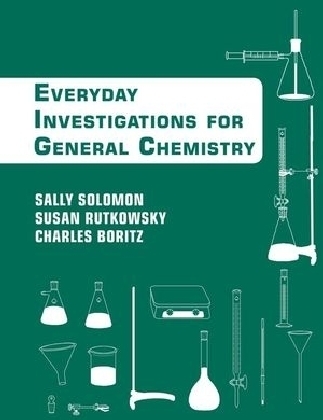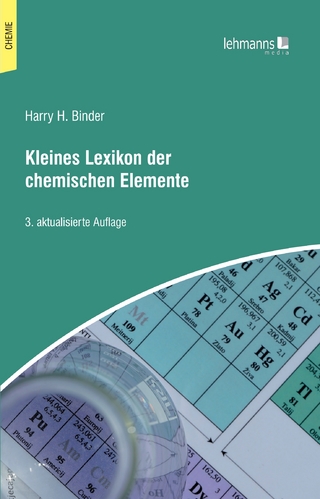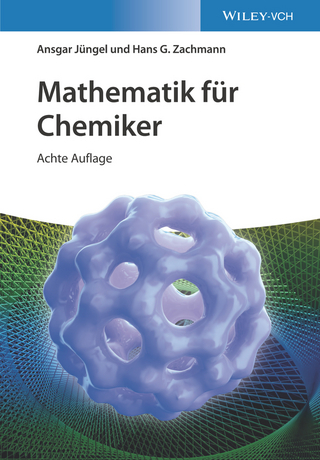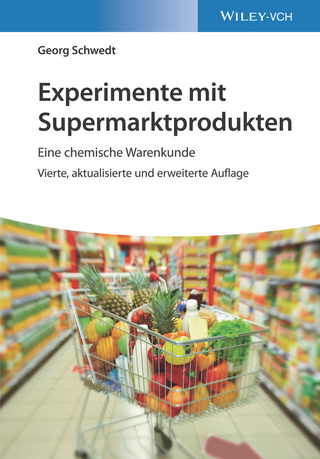
Chemistry
John Wiley & Sons Inc (Verlag)
978-0-470-08510-3 (ISBN)
- Lieferbar (Termin unbekannt)
- Versandkostenfrei innerhalb Deutschlands
- Auch auf Rechnung
- Verfügbarkeit in der Filiale vor Ort prüfen
- Artikel merken
Chemistry: An Everyday Approach to Chemical Investigation is intended to accompany any mainstream general chemistry course, and consists of 27 experiments that can be completed using only chemicals found in consumer products. The manual is an ideal resource for courses emphasizing green chemistry in which the use of hazardous materials is reduced or eliminated altogether. Many of the experiments requiring simple equipment and glassware can be performed at remote sites providing laboratory experience for use with on-line or long distance learning courses. The advantages of using accessible materials in chemistry laboratory are considerable. Students can reinforce lecture discussions while working with familiar materials. For instructors, assembling the chemicals required for a lab course can be accomplished with limited budgets and without access to a chemical company. Problems with safety and waste disposal are significantly reduced.
Dr. Sally D. Solomon is a professor of Chemistry and has been teaching at Drexel University for 20 yrs. While balancing her classes, she is involved in philanthropic causes including, Science In Motion (SIM). It is funded by the Commonwealth of Pennsylvania and provides equipment and materials for high school chemistry and middle school earth science classes. Her research interests include organic synthesis, molecular spectroscopy, and Chemical Education: Courseware development.
I. Chemicals. II. Equipment, Glassware, and Laboratory Techniques.
III. Reporting Data and Results.
IV. Safety.
V. Experiments.
Experiment 1. Density: Identifying Solids and Liquids.
Experiment 2. Beer's Law, Copper Ammonium Complex.
Experiment 3. Analysis of Food Dyes using Visible Spectroscopy and Paper Chromatography.
Experiment 4. Determining the Formula of a Hydrate.
Experiment 5. Quantitative Determination of P in Plant Food.
Experiment 6. Preparation of Solutions.
Experiment 7. Analysis of Spinach Extract.
Experiment 8. Measuring pH with Universal Indicator.
Experiment 9. Extraction of Curcumin from Turmeric.
Experiment 10. pH-Titration.
Experiment 11. Preparation & Acid-Base Properties of Ammonium Chloride.
Experiment 12. Boyle's Law.
Experiment 13. Molar Mass of a Volatile Liquid by Vapor Density.
Experiment 14. Percent of H2O2 by Gas Evolved.
Experiment 15. Equilibrium and Le Châtelier's Principle.
Experiment 16. Calorimetry: Measuring Heat of Neutralization.
Experiment 17. Heat of Solution and Hot Packs.
Experiment 18. Molar Mass by Freezing Point Depression.
Experiment 19. Kinetics of the Iodination of Acetone.
Experiment 20. Kinetics of the Oxidation of Food Dye with Sodium Hypochlorite.
Experiment 21. Redox Titration: Iodine used to Determine Ascorbic Acid.
Experiment 22. Electrochemistry.
Experiment 23. Synthesis of Copper Nanoparticles.
Experiment 24. Synthesis of Copper Pigments: Making Paints.
Experiment 25. Synthesis of Ethyl Salicylate from Aspirin Tablets.
Experiment 26. Qualitative Analysis of Household Compounds and Mixtures.
Experiment 27. Measuring Potassium-40 in Salt Products.
Appendix. Table of Available Chemicals.
| Erscheint lt. Verlag | 11.7.2008 |
|---|---|
| Verlagsort | New York |
| Sprache | englisch |
| Maße | 213 x 277 mm |
| Gewicht | 590 g |
| Einbandart | Paperback |
| Themenwelt | Naturwissenschaften ► Chemie ► Allgemeines / Lexika |
| ISBN-10 | 0-470-08510-X / 047008510X |
| ISBN-13 | 978-0-470-08510-3 / 9780470085103 |
| Zustand | Neuware |
| Haben Sie eine Frage zum Produkt? |
aus dem Bereich


